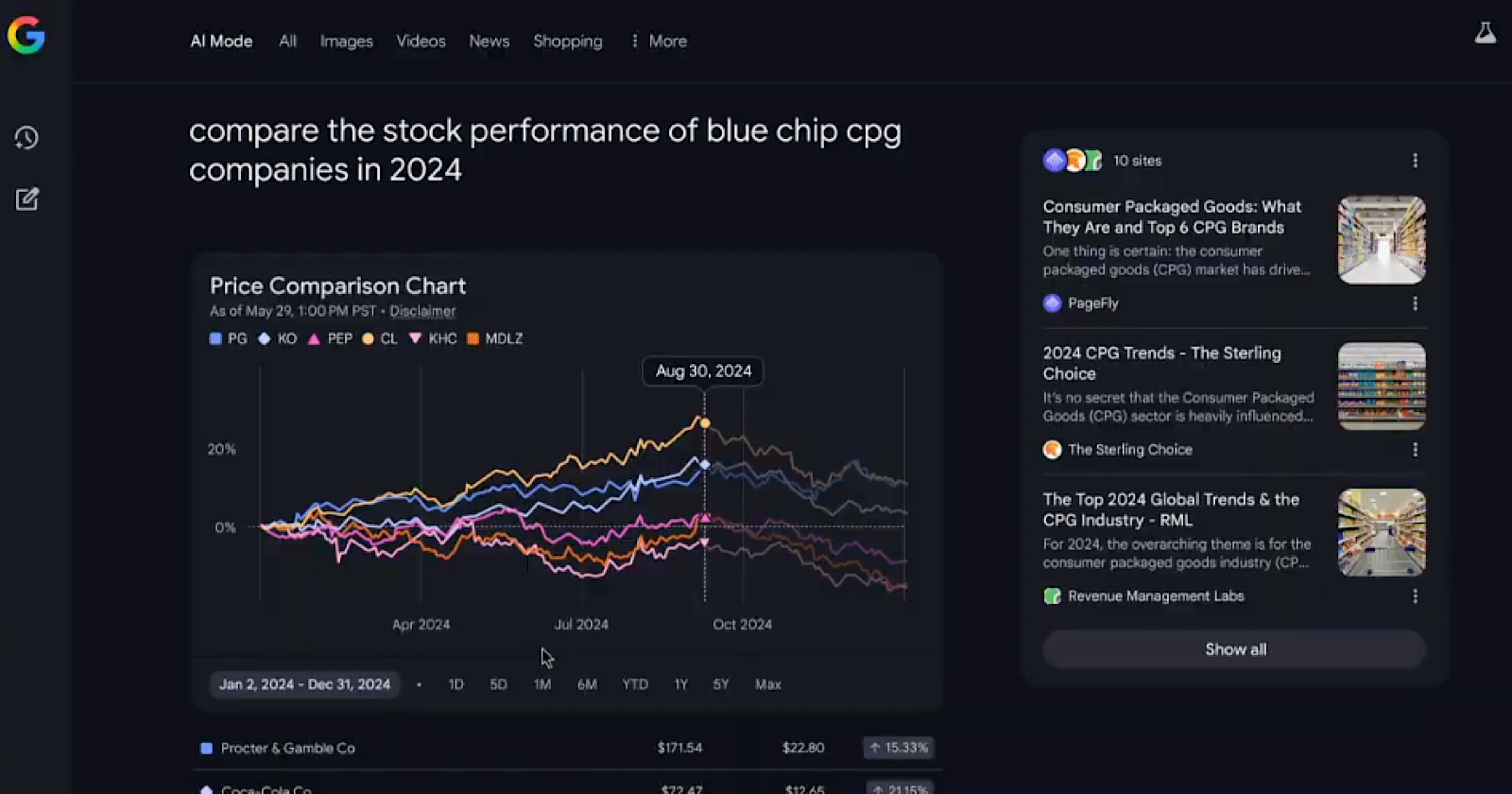How to create an internal email editorial calendar for your comms team
Tired of inbox chaos and mixed messages? Discover the simple tool that can bring order to your internal comms. Whether you’re just getting started or looking to level up your internal email management game, this guide covers how to create an internal email editorial calendar to help your team stay organized and your people engaged. […] The post How to create an internal email editorial calendar for your comms team appeared first on Ragan Communications.

Tired of inbox chaos and mixed messages? Discover the simple tool that can bring order to your internal comms.
Whether you’re just getting started or looking to level up your internal email management game, this guide covers how to create an internal email editorial calendar to help your team stay organized and your people engaged.
What is an email editorial calendar?
An internal email editorial or content calendar is a shared calendar that outlines what internal emails are being sent, to whom, when and why. As a single source of truth, it can help you plan and prioritize email content, alert you of competing sends, optimize timing and help you track your performance, all while making it easier to collaborate within your team (and across departments). It can also help prevent email overload — so your team doesn’t accidentally send five emails to the same group of employees in one week (unless it’s benefits season, or something exciting is happening).
Why do you need an email calendar?
Depending on your organization’s size, you may have a lot of cooks in the internal comms kitchen: HR, IT, operations and leadership may all have messages to share. Employees can only handle so much email, and repetitive messages from multiple senders are a primary cause for feeling email overload. Without a shared calendar, emails can quickly become repetitive, poorly timed and unmanageable. An editorial calendar can make it easier for your team to boost visibility of your internal comms efforts, collaborate with other departments, space out communications and ultimately, create a better employee experience.
What is email and calendar management?
Internal email and calendar management can keep your messaging clear, consistent and optimized when done well. When you do it right, you send the right amount of information to the right people at the right time. This strategy involves prioritizing messaging, scheduling, spacing sends and tracking deadlines. The goal is to organize your internal comms so your team can work efficiently and avoid overwhelm. Managing internal comms with a visual calendar system can help simplify your workflow. Remember to include senders who are not part of your internal comms team — HR and IT tend to send a lot of broadcast emails.
How to create an internal email editorial calendar
- Pick your format. When selecting an internal email editorial calendar, the best approach is to choose a format that aligns with your team’s existing tools and workflow while meeting the specific needs of your internal communications strategy. PoliteMail’s Calendar View, for example, offers valuable features like color-coded events and visual clarity of scheduled sends, making it an excellent choice for teams seeking streamlined and organized email management. However, alternatives such as shared Outlook calendars, Excel spreadsheets or project management tools can also be effective depending on your team’s preferences and familiarity with these platforms. Consider factors like content planning capabilities, collaboration functions and visual limitations when evaluating options. The right calendar should simplify your workflow, foster collaboration across departments and support clear, consistent messaging that engages your audience without overwhelming them.
- Define email categories. Next, you’ll want to assess your email content and create typical buckets like announcements, culture, events, HR/benefits, IT and leadership comms. These standardized buckets can help you categorize and prioritize your messaging, quickly identify any imbalances in the types of messaging you’re sending and assess the effectiveness of each category.
- Map your audience. You’ll want to divide your all-employee email list into smaller target audiences based on specific criteria or characteristics. Data from PoliteMail, which includes four billion emails sent to 12 million global employees, shows that attention and readership decrease as the distribution list size increases. Organizations commonly segment lists based on hierarchy (staff, management and leadership), units (divisions, departments and brands), geographic location (region, country and city), and categorically, such as benefits enrollment (declined, not enrolled, enrolled or experiencing a qualifying life event).
- Determine send frequency. Next, you’ll want to identify recurring sends. What do you send weekly? Monthly? Quarterly? You can slot these recurring messages into your email calendar and plan other messages around them. Prioritize this consistency while leaving room for flexibility. By leaving space between scheduled sends, you can minimize the risk of overlapping messages if leadership needs to send a time-sensitive, yet unexpected message.
- Build in time for editing—and communicate expectations. As internal comms professionals, you’re already familiar with the time it takes to craft and edit a message. But when you share your editorial email calendar with other teams, like IT or leadership, it can be helpful to make that timeline visible to them. Communicate your draft deadlines, when feedback is due and final scheduling. Or consider noting minimum lead times. For example, content must be submitted to your team for review at least seven days in advance. These timelines can allow space for thoughtful, well-reviewed messages.
- Measure and adjust. When you create an internal email editorial calendar, you want to maximize your impact and minimize overload by using your time and resources efficiently. Evaluate your approach, benchmark your performance, and refine your email management strategy to improve overall effectiveness. Review read and engagement rates, and analyze employee feedback. Your calendar should evolve with your team.
Simplifying internal comms with an email editorial calendar
A thoughtful and visual internal email editorial calendar isn’t just about logistics; it can help your team produce more intentional, strategic messages. When you plan, it’s easier to loop in other departments, engage your people and keep those all-staff emails from disappearing into the digital void. An email unread is a message unsaid.
The post How to create an internal email editorial calendar for your comms team appeared first on Ragan Communications.


























![How To Launch, Grow, and Scale a Community That Supports Your Brand [MozCon 2025 Speaker Series]](https://moz.com/images/blog/banners/Mozcon2025_SpeakerBlogHeader_1180x400_Areej-abuali_London.png?auto=compress,format&fit=crop&dm=1747732165&s=beb7825c980a8c74f9a756ec91c8d68b#)
![Clicks Don’t Pay the Bills: Use This Audit Framework To Prove Content Revenue [Mozcon 2025 Speaker Series]](https://moz.com/images/blog/banners/Mozcon2025_SpeakerBlogHeader_1180x400_Hellen_London.png?auto=compress,format&fit=crop&dm=1747758249&s=9f3c5b1b7421f862beace1cb513053bb#)
![How To Create an Integrated Strategy That Increases Brand Mentions and Visibility [Mozcon 2025 Speaker Series]](https://moz.com/images/blog/banners/Mozcon2025_SpeakerBlogHeader_1180x400_JamesH_London.png?auto=compress,format&fit=crop&dm=1747780409&s=9bf9f0a2623b4a8be6eaf8f235115505#)





















![The 11 Best Landing Page Builder Software Tools [2025]](https://www.growthmarketingpro.com/wp-content/uploads/2024/04/best-landing-page-software-hero-image-1024x618.png?#)

































































![Social media image sizes for all networks [June 2025]](https://blog.hootsuite.com/wp-content/uploads/2023/01/Social-Media-Image-Sizes-2023.png)


![41 Instagram features, hacks, & tips everyone should know about [new data]](https://www.hubspot.com/hubfs/Instagram-hacks-1-20240916-2633447.webp)




















